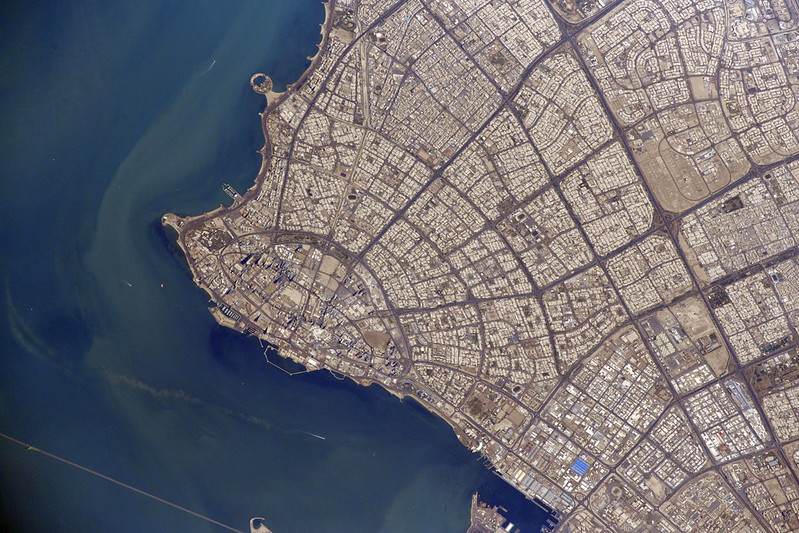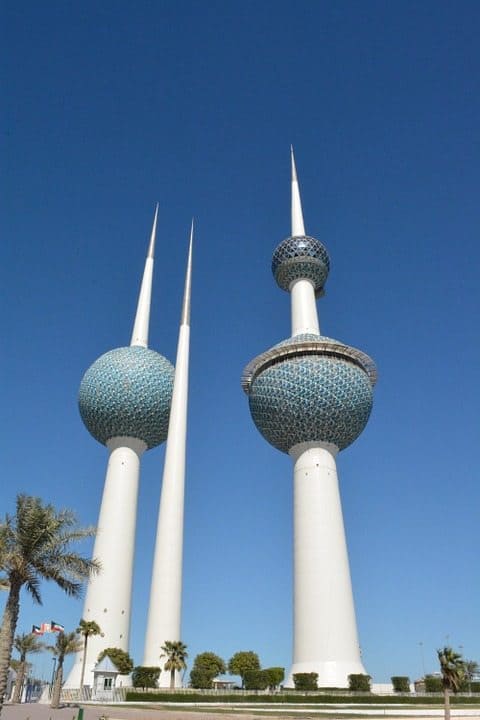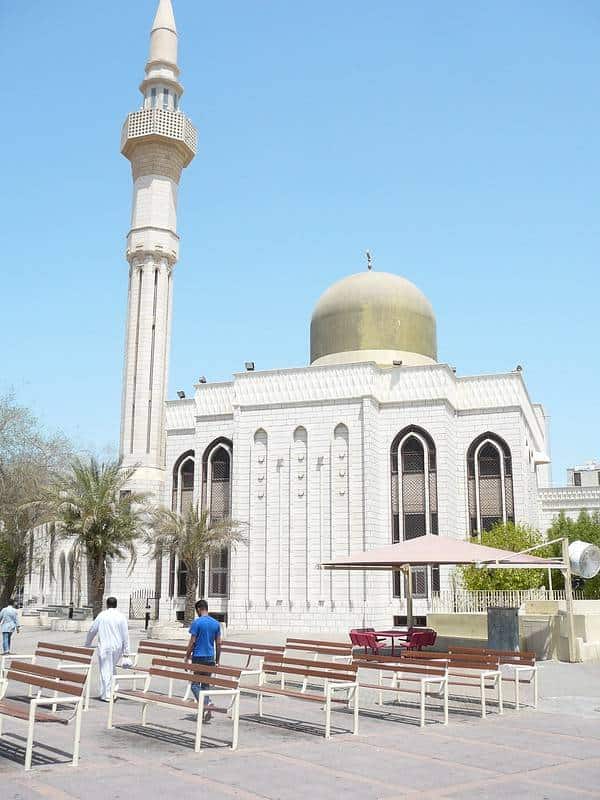What is Kuwait Known For
Kuwait is a country in the Middle East, neighboring Saudi Arabia, and Iraq. It’s famous for quite a few things, and you can learn more about all the different things that Kuwait is known for right here in this detailed guide!
The Middle Eastern country is best-known for its key role in the oil industry, considering that it has one of the world’s largest oil reserves. But there’s more to Kuwait than petroleum – the small country is also popular for its beautiful capital with loads of cultural attractions, camel racing, an island full of archaeological sites, and much more!
Read on to learn more about Kuwait, and all the different things that the small country in the Middle East is known for around the world!
Kuwait City

Kuwait City is both the capital and the largest city in Kuwait. It’s situated at the heart of the country, and it is the economic, cultural, and political center of Kuwait. This is where all the major government offices are located, as well as the headquarters of the most important banks and corporations of the country.
Kuwait City has some 3 million residents in its metropolitan area, which accounts for more than 70% of the country’s entire population. This makes sense because the vast majority of the country is desert, except for a few cities and the Al-Jahrāʾ oasis.
The Persian Gulf

Image courtesy of NASA Johnson
Kuwait City is situated on the shore of the Persian Gulf, which is also known as the Arabian Gulf. It is an extension of the Indian Ocean, situated between the Arabian peninsula and Iran.
The Persian Gulf played a big role in Kuwait’s history – it was a battlefield during the late 20th-century Iran-Iraq War, owing to the fact that it is the single largest source of crude oil not just in the Middle East, but in the entire world.
It’s also one of the locations of the famous Gulf War, which saw a US-led coalition of 35 nations fight against Iraq’s invasion of Kuwait.
The Gulf War
The Gulf War happened in early 1991, and it lasted for a little over a month. After Iraq invaded Kuwait and tried to annex it, the United States led a coalition of 35 nations in a war against Iraq and its dictator, Saddam Hussein, which was the largest military alliance since WWII.
The war is also famous for its codenames – Operation Desert Shield was used for all the operations leading up to the combat phase, while the combat phase was codenamed Operation Desert Storm.
It took only 24 hours for the coalition forces to gain control of the skies and bombard all the Iraqi strategic sites. The Gulf War was a short war – Operation Desert Storm lasted just 43 days, and the US-led coalition was ultimately victorious in its defense of Kuwait.
Kuwait National Museum
Kuwait National Museum is situated in the country’s capital, and it is the national museum of Kuwait. The museum spans five different buildings, which are arranged around a garden in the center. All the main buildings are connected to one another with walkways, and their design mirrors that of a traditional Arab mudhouse.
The museum boasts a large collection of various artifacts recovered from Falilka Island, which is known for its many archaeological sites. The collection of the Kuwait National Museum also includes a large number of animal fossils, artifacts that tell the story of the daily life of Kuwaiti citizens during earlier periods, and quite a few bronze coins that date to the Bronze and Hellenistic periods.
This museum is great for people who want to learn more about Kuwait’s rich history, as well as the culture and traditions of its people.
Kuwait Towers

The Kuwait Towers are tall and slender towers in Kuwait City, situated on a promontory point in the Persian Gulf. They were a part of the city’s water tower system, and nowadays they’re one of the key symbols of Kuwait City.
The main tower is the tallest in the group, with a total height of 187 meters. It has two spheres – the lower one features a water tank in its bottom half and a cafe, restaurant, and lounge in the upper half, while the upper sphere features just a cafe. Also, the upper sphere rotates and completes a full rotation every 30 minutes, offering spectacular panoramic views of Kuwait Bay and the rest of the city.
The second-tallest tower also features a water tank, while the smallest of the three Kuwait Towers doesn’t store any water. Instead, it houses the equipment necessary to illuminate the bigger towers.
Grand Mosque (Kuwait City)

Image courtesy of Alan & Flora Botting
The Grand Mosque in Kuwait City is not just the most famous building in the capital, but also the largest mosque in the country of Kuwait. It’s a famous attraction in the city, and something you should definitely visit should you get a chance to visit Kuwait.
The mosque feature 144 windows, which allow for spectacular natural lighting inside its premises. It boasts an area of 45,000 square meters, with the main prayer hall that is 72 meters wide on each side. The prayer hall also boasts teakwood doors that are absolutely gorgeous, while a different area of the mosque houses a library of some 350 square meters.
The library has a vast collection of Islamic documents and reference books, and it’s one of the most significant libraries in the country.
Additionally, it’s worth noting that Kuwait City’s huge mosque accommodates quite a lot of worshippers during prayer times. That’s why the mosque also boasts a five-level garage underneath its premises. It can hold up to 550 cars, and sometimes not even that is enough to accommodate all the worshippers who come to this fascinating mosque.
Mirror House (Kuwait City)
Mirror House is an art museum and a popular tourist attraction in Kuwait’s capital city. It’s a formerly private house that has been turned into a museum, and it is the only house in the world that’s entirely been covered with a mirror mosaic.
The house features the iconic mosaic both on the outside and the inside, and everything was done by artist Lidia Al Qattan, who is actually the owner of the house. The Mirror House is open for guided tours, and you need to book a spot since there are usually no more than 10 people in a single group.
If you’re exploring Kuwait and you want to see something magnificent and unique, this is definitely one of the top things to do in the charming city. The fascinating museum is popular both among tourists and Kuwaiti citizens, and the 2-hour tour of the house might just be the highlight of your trip to Kuwait.
Liberation Tower

Image courtesy of Rob Faulkner
The Liberation Tower is a telecommunications tower in Kuwait City. It is 372 meters tall, which makes it the second tallest structure in the entire country. Unfortunately, the tower is not accessible to tourists,
The Liberation Tower has a rather interesting backstory. It was commissioned before the Iraqi invasion, and it was initially named the Kuwait Telecommunications Tower. The construction halted when the invasion happened, and miraculously, the tower structure suffered no damage.
The tower construction resumed after Iraqi forces were run out of Kuwait, and upon completion, the famous tower was renamed the Liberation Tower. It’s a symbol of the liberation of Kuwait from Iraq, and proudly represents Kuwaiti independence.
Al-Jahrāʾ oasis
Kuwait is mostly a desert, except for the Al-Jahrāʾ oasis. The oasis town is situated some 50 kilometers west of Kuwait City, and it’s the center of Kuwait’s agricultural region. There are several farms in Kuwait’s only oasis, which mostly produce various fruits and vegetables.
Al Jahra was first founded as a tiny oasis village, and it had slowly expanded to become the country’s principal agriculture area. It also became notable as a trading point and a popular stop on the route to Kuwait City, which helped it gradually grow into a proper town.
In more recent history, the stunning oasis is best known for the 1920 Battle of Jahra, which saw a conflict between the Saudi and Kuwaiti forces. Kuwait was victorious in the conflict and King Abdul Aziz al-Saud eventually recognized it as an independent state, and today there is a national monument in the oasis that commemorates the battle.
Sheikh Jaber Al Ahmad Cultural Centre (Kuwait City)
Sheikh Jaber Al Ahmad Cultural Centre, also known as just the Kuwait Opera House, is a vast cultural complex in Kuwait City. It’s the largest opera house and cultural center in the Middle East, and it includes numerous theaters, libraries, concert halls, cinemas, exhibition halls, and many other event spaces that host various cultural events in Kuwait City.
The huge cultural complex features four separate buildings organized around a central city plaza. This design is common in traditional Islamic architecture, and something similar can be observed in the design of the Kuwait National Museum.
Although the complex is largely inspired by traditional Islamic architecture, the dominant architectural style is still expressionism, with several elements of modern architecture and geometric abstractions.
Failaka Island

Image courtesy of Mohammad Abdullah
Kuwait has nine islands in the Persian Gulf, and Failaka Island is perhaps the most special one. Its strategic location has allowed Kuwait to control the trade in the Persian Gulf, and the island has been used strategically since the existence of Ur, the Sumerian city-state.
Today, this Kuwait island is best known for its beautiful beaches and countless archaeological sites. In fact, the island is pretty much the center for archaeology in Kuwait, boasting more than 4,000 years of history on its tiny 16 square miles.
The island is becoming an increasingly popular holiday destination for vacationers from Kuwait City. A ferry in Salmiya Marina operates between the island and mainland Kuwait, transporting passengers to the beautiful island every day.
House of Sabah
House of Sabah is Kuwait’s ruling family, originating from the Bani Utbah confederation. Sabah I was the founder of the ruling house, and he was the first ruler of Kuwait back in the late 18th century.
The ruling Al Sabah family has stayed in power in the country since then, and the current head of the country is Nawaf Al-Ahmad Al-Jaber. The current Emir of Kuwait is one of the most senior members of the ruling dynasty, and he held the title of Crown Prince of Kuwait from 2006 until 2020 when he succeeded his half-brother as Emir.
The tradition of monarchies is very common in Middle Eastern countries. Six countries in the Arabian Peninsula are monarchies, and the ruling family members aren’t just the military commanders and official rulers of the country. It’s common for members of the ruling family to hold key government roles, but it’s worth noting that there are only three members of the Al Sabah family in the current Kuwaiti government.
Political experts consider this as a sign that not everything is in order within the House of Sabah, especially since there are no family members under the age of 50 in key government roles.
Bait Al Outhman Museum (Hawally)
Bait Al Outhman is a historic museum in Hawally, an area of Kuwait City. It is dedicated to the culture and history of Kuwait, and it chronicles them from the pre-oil period to the modern-day.
If you are interested in learning more about the history of Kuwait and the culture of its people, you should definitely go to this museum. Visitors can see lots of historic artifacts and memorabilia from pre-oil Kuwait, as well as rooms decorated with period furniture. These give an insight into how the people of Kuwait lived in pre-oil times, and they’re certainly an interesting attraction.
Additionally, the museum also houses several mini-museums, which are dedicated to certain fields of Kuwaiti tradition. These include the Kuwait Drama Museum, the Kuwaiti Souw, the Journey of Life Museum, the Kuwait House Museum, and the Heritage Hall.
Camel Racing

Image courtesy of Steve Petrucelli
While several other countries in the Arab World are known for hosting popular motorsport races, Kuwait is better known for a different kind of racing. Camel racing is very popular in this Arab country, with races taking place every Saturday between October and April.
In addition to the weekly races, a week-long racing festival is held in February every year. The popular festival sees about six-eight preliminary races every day, with the final race taking place on the festival’s last day. This is organized by the Kuwait Camel Racing Club, which also provides free food for everyone at the festival, as well as camel rides for visitors!
Camel racing has been popular in the Arabian peninsula for pretty much forever – at the very least, it can be traced back to the early Islamic period, around the 7th century CE. It was initially more of a folk sport but has slowly grown in popularity to become one of the popular events that are held in various countries throughout the Arab World.
It’s a Wealthy Country
In 2020, Kuwait ranked as the third richest country in the Arab World by GDP per capita. It also ranks high on most lists of the richest countries in the world, thanks to petroleum – Kuwait’s economy is largely based on petroleum, due to huge reserves.
Kuwait has enormous oil reserves, which account for around 6.1% of the world’s total oil reserves. That’s a lot, and it is estimated that the Arab country held around 101,500,000,000 barrels of oil back in 2016.
About 43% of the country’s total GDP is due to oil production, while petroleum exports account for 70% of Kuwait’s total export earnings. The country’s second-largest industry is the manufacturing of steel, with Kuwait being entirely self-sufficient in steel production.
Also, the Kuwaiti dinar is the world’s highest-valued currency unit, while the World Bank ranks the country as the fifth richest country in the world by (per capita) gross national income.
Sabah Al Ahmad Sea City
Sabah Al Ahmad Sea City is a city in southern Kuwait that was inaugurated in 2006. It can hold up to 250,000 residents, and it was built on some 200 kilometers of artificial shorelines.
The Sea City features artificial islands that were created by the excavation of large channels, and it’s considered a pioneering project in the Arab peninsula, thanks to the implementation of sustainable construction techniques.
The artificial islands are kind of similar to the Palm Islands of Dubai, just without the environmental concerns raised by the construction of Dubai’s artificial islands. The impact of Kuwait’s artificial islands on the ecosystem is seen as positive, due to the creation of marine habitats that are now extremely similar to natural habitats in the open sea.
Similar to Dubai’s Palm Islands, the Sabah Al Ahmad Sea City is also home to quite a few luxurious resorts and sandy beaches, which make it one of Kuwait’s best destinations for a seaside vacation.
About the Author Anna Timbrook
Anna is the co-owner of expert world travel and can't wait to share her travel experience with the world. With over 54 countries under her belt she has a lot to write about! Including those insane encounters with black bears in Canada.

